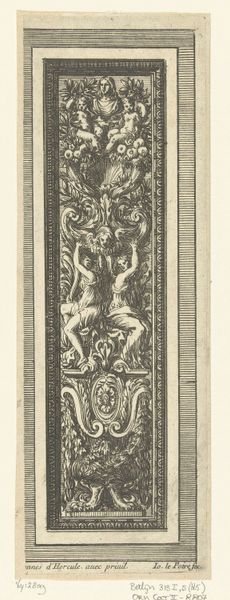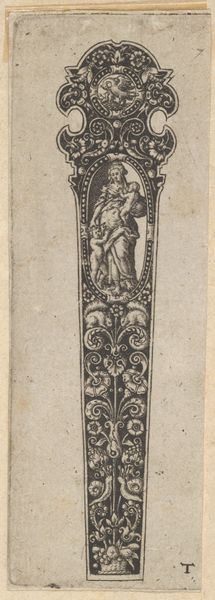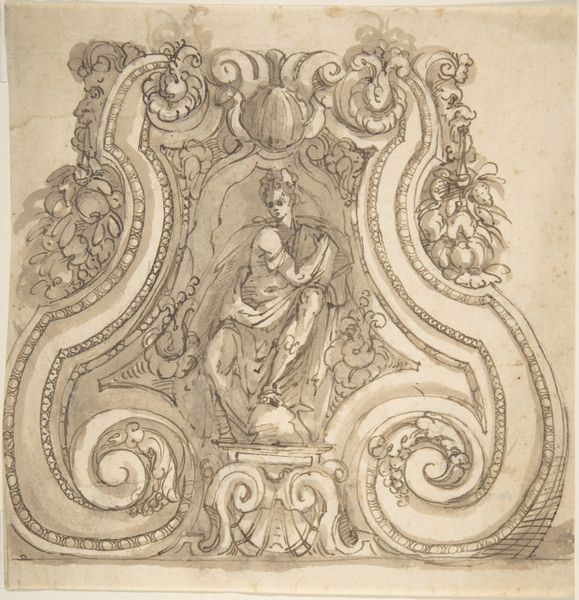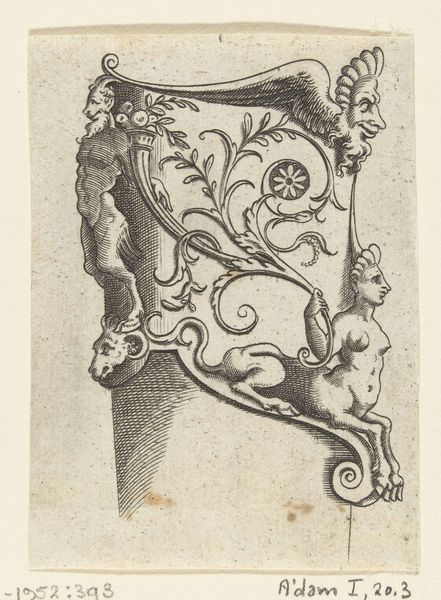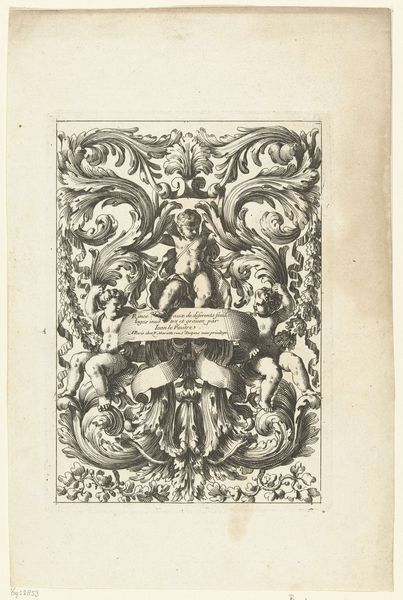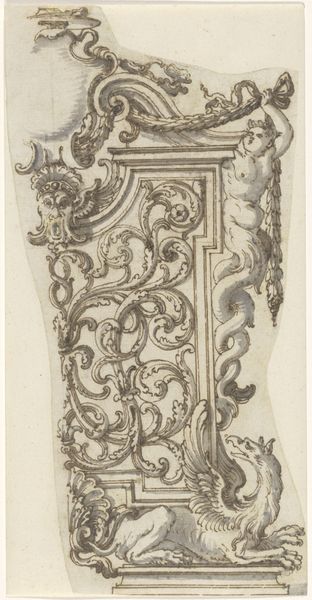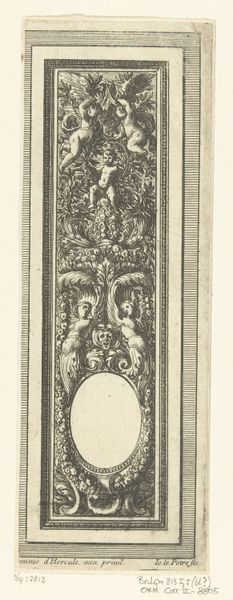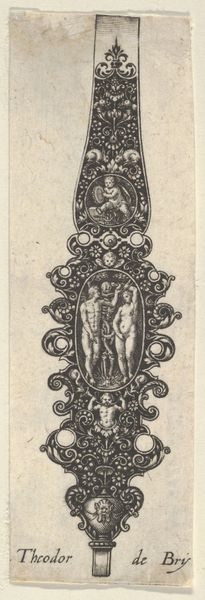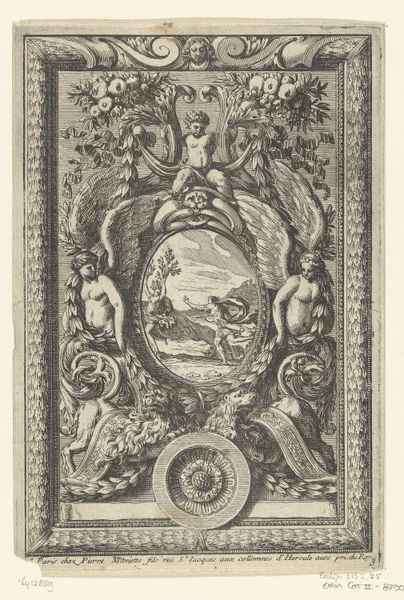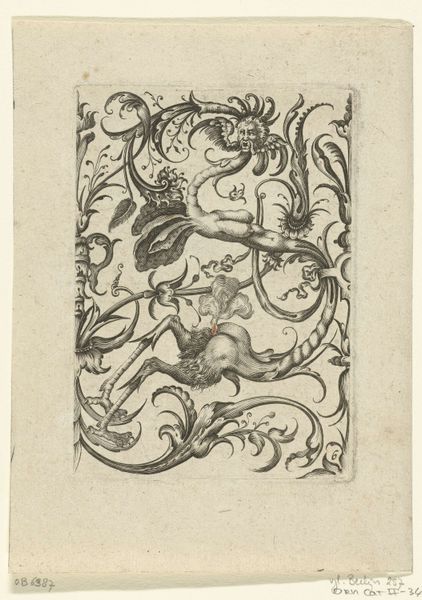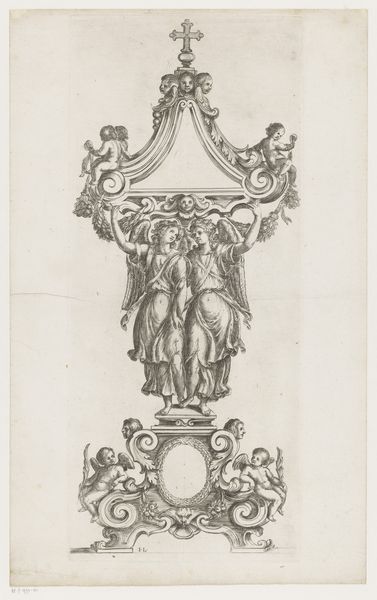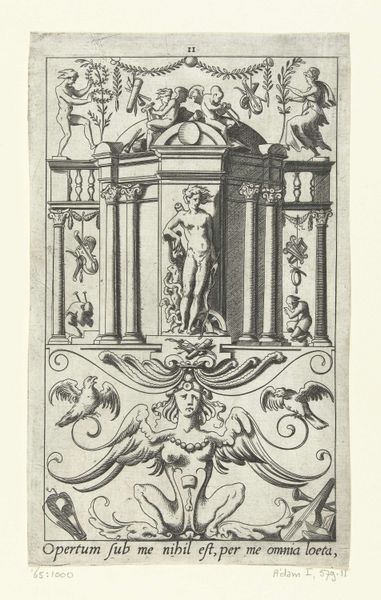
Design for a Repouseé Cane Handle 1675 - 1750
0:00
0:00
drawing, ink, pen
#
drawing
#
ink drawing
#
baroque
#
pen drawing
#
figuration
#
ink
#
pen
#
decorative-art
Dimensions: 3 7/16 x 1 11/16 in. (8.7 x 4.3 cm) frame: 21 x 16 in. (53.3 x 40.6 cm)
Copyright: Public Domain
This is a design for a cane handle, made by Juste-Aurèle Meissonnier in the 18th century, using pen and black ink, with gray wash, on off-white paper. The technique suggested by this drawing is repoussé, where a sheet of metal is hammered from the reverse side to create a raised design. This was a popular technique for creating elaborate, three-dimensional forms in precious metals, like gold and silver. Repoussé requires careful planning and skillful execution, as the metal must be worked evenly to avoid tearing or distortion. The surface is highly ornamental, featuring figures in a garden setting. Note the intricate details in the rendering of the figures, the flowing drapery, and the delicate foliage. Meissonnier was a leading designer of the Rococo period, known for his elaborate and asymmetrical designs. This drawing showcases his mastery of the repoussé technique, and his ability to create dynamic and visually stunning forms. Consider the amount of labor that would have gone into creating such an object, and its function as a symbol of status and wealth. This design shows how the boundaries between art, craft, and design were fluid in the 18th century, and how skilled artisans played a vital role in shaping the material culture of the time.
Comments
No comments
Be the first to comment and join the conversation on the ultimate creative platform.
